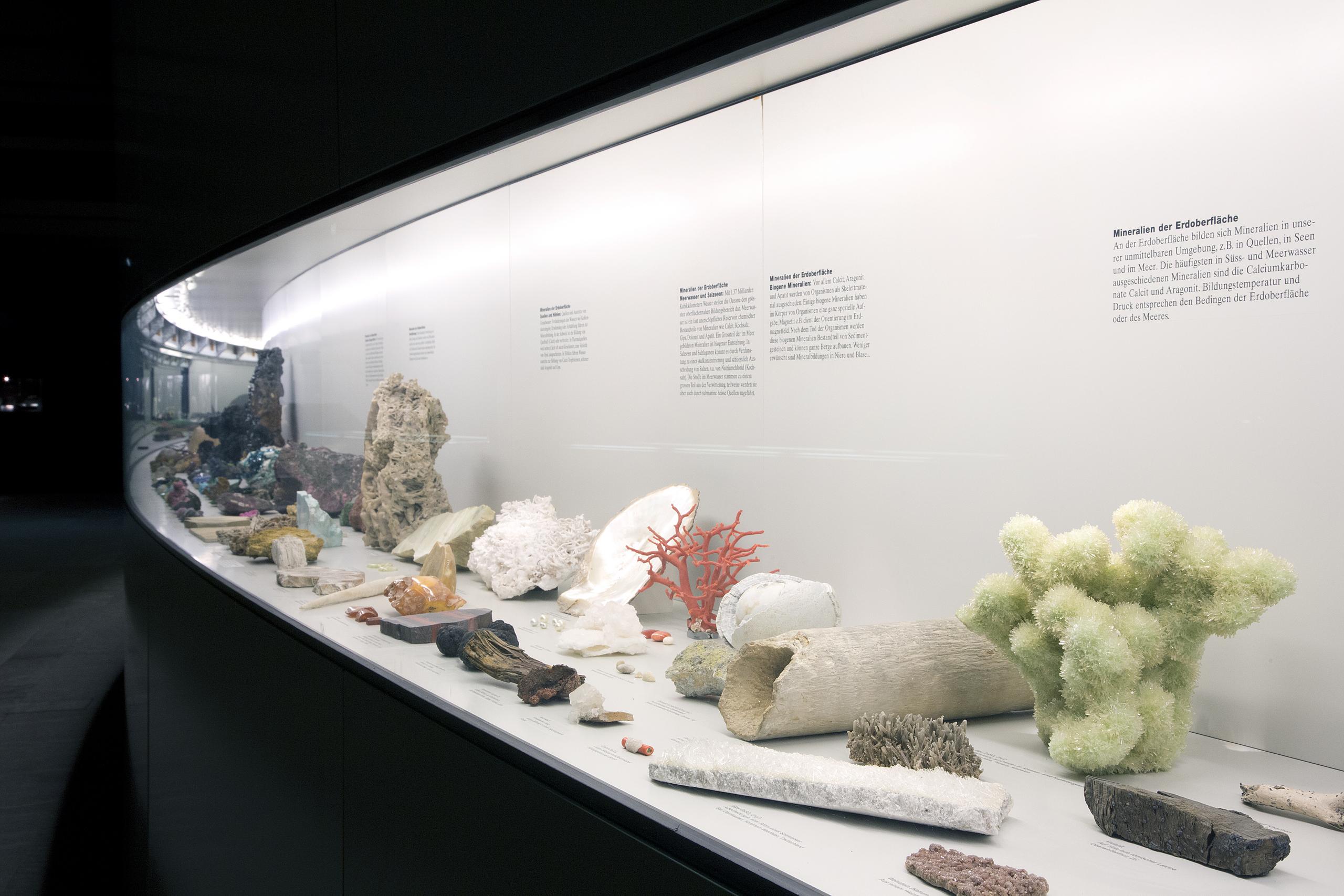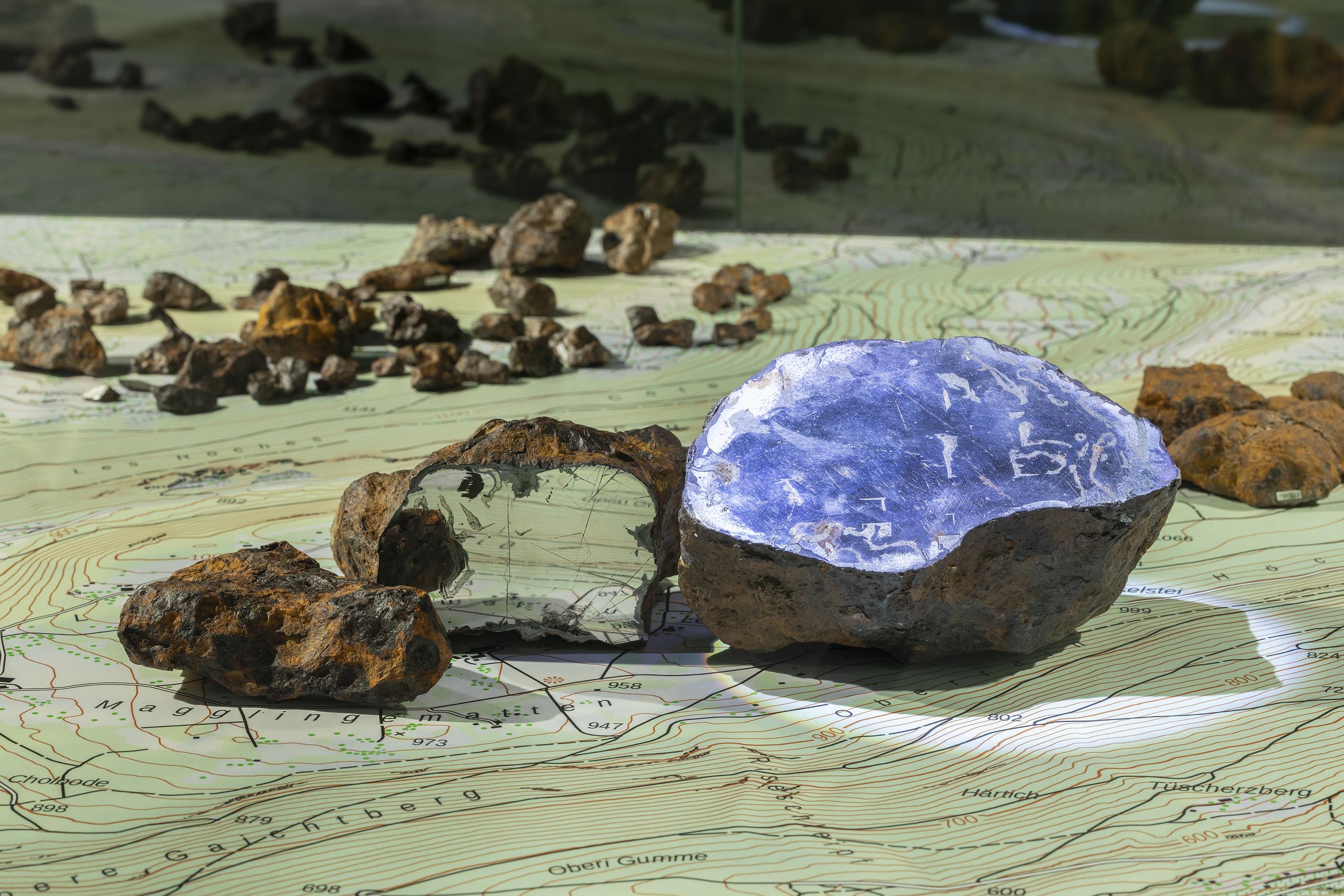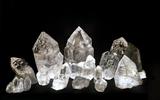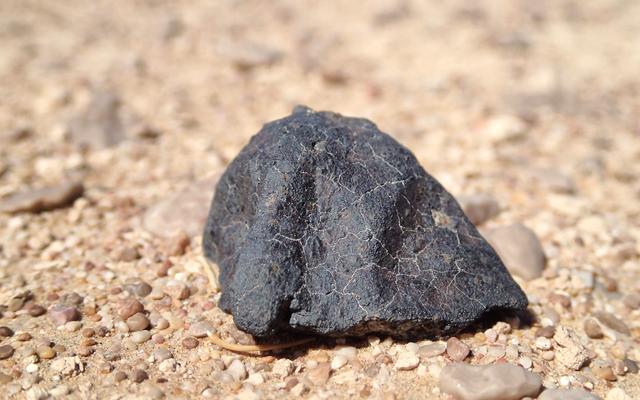Minerals (natural crystals) are a hugely important raw material for humankind. We come across minerals or products derived from them in virtually all aspects of everyday life. And that doesn’t just apply to Stone Age axes and the like – cars, computers, buildings and bridges are all made from mineral-based materials too. Hence why a large part of the exhibition is dedicated to mineralogy, with a particular focus on mineral discoveries from the Swiss Alps. These examples of quartz (also known as rock crystal) span several centuries – from a find on the Vordere Zinggenstock mountain in 1719 and the black crystals (morion quartz) discovered in the Tiefen Glacier in 1868 to the giant crystals found in the Planggenstock mountain. A cross-section of Alpine mineralogy is on show in a series of display cases, in which exquisite rarities feature alongside more common varieties of rock crystals. One 16-metre-long, crescent-shaped display showcases the colourful variety of minerals from all kinds of different formation areas. The impressive histories and sheer beauty of the 2,300 minerals and rocks on display are sure to captivate visitors. These pieces of topaz, apatite, calcite and other substances are a true feast for the eyes.

The exhibition also showcases the ‘Seltenen Schönheiten’ (‘Rare beauties’), minerals from the collection compiled by Yves Wüthrich (1977–2019). The museum acquired this treasure trove – containing some 3,200 objects – in 2020, after the mineral collector's untimely death. Wüthrich had a keen eye for unusually beautiful and valuable minerals – some of them the best examples of their kind in the world. The 60 or so pieces included in the exhibition offer an insight into this wonderful mineral universe:

The museum also specialises in the extraterrestrial – in this case, meteorites. Among the items on show are findings from Oman, where researchers from the museum managed to track down the first freshly fallen meteorites in 2023. The museum’s geological research team also played a leading role in the discovery of the Twannberg meteorite field, the only known strewn field in Switzerland. There is a specific section of the exhibition devoted to this discovery. ‘The Twannberg meteorite – A celestial messenger from the past’ documents a rare phenomenon: 175,000 years ago, a meteorite measuring at least four metres long entered the Earth’s atmosphere and shattered into thousands of fragments over the Twannberg region in the Bernese Jura. They ended up strewn across a glacier dating from the Penultimate Ice Age. The Twannberg meteorite is a piece of luck in the truest sense: iron meteorites like this one are extremely rare and we are lucky to be able to view them up close at the Natural History Museum Bern:






